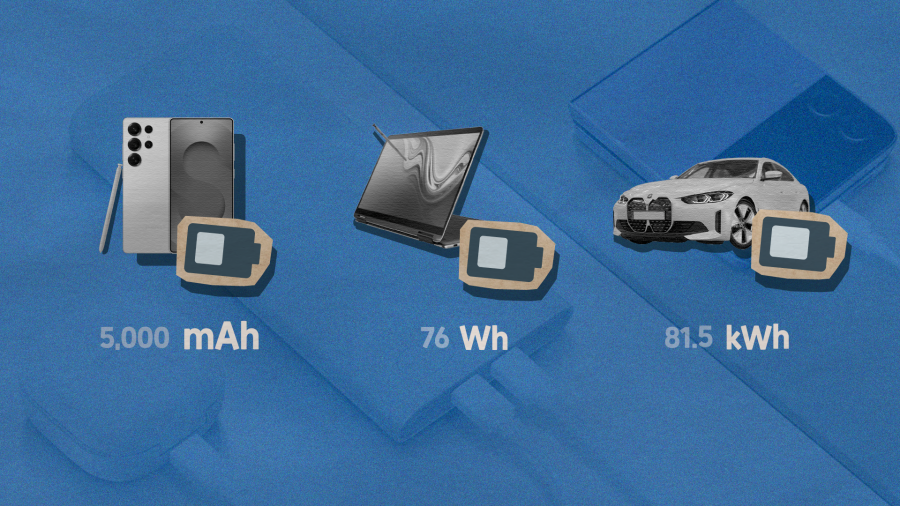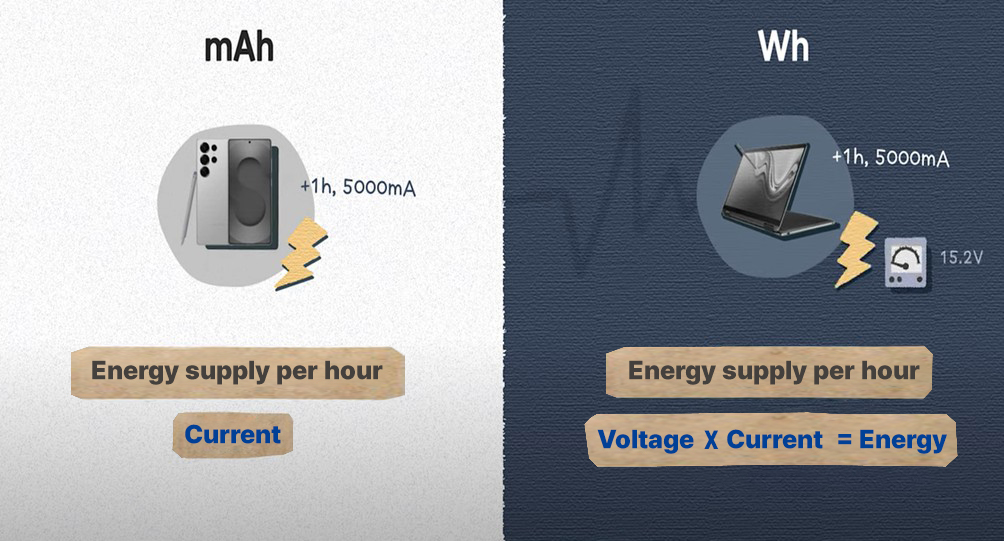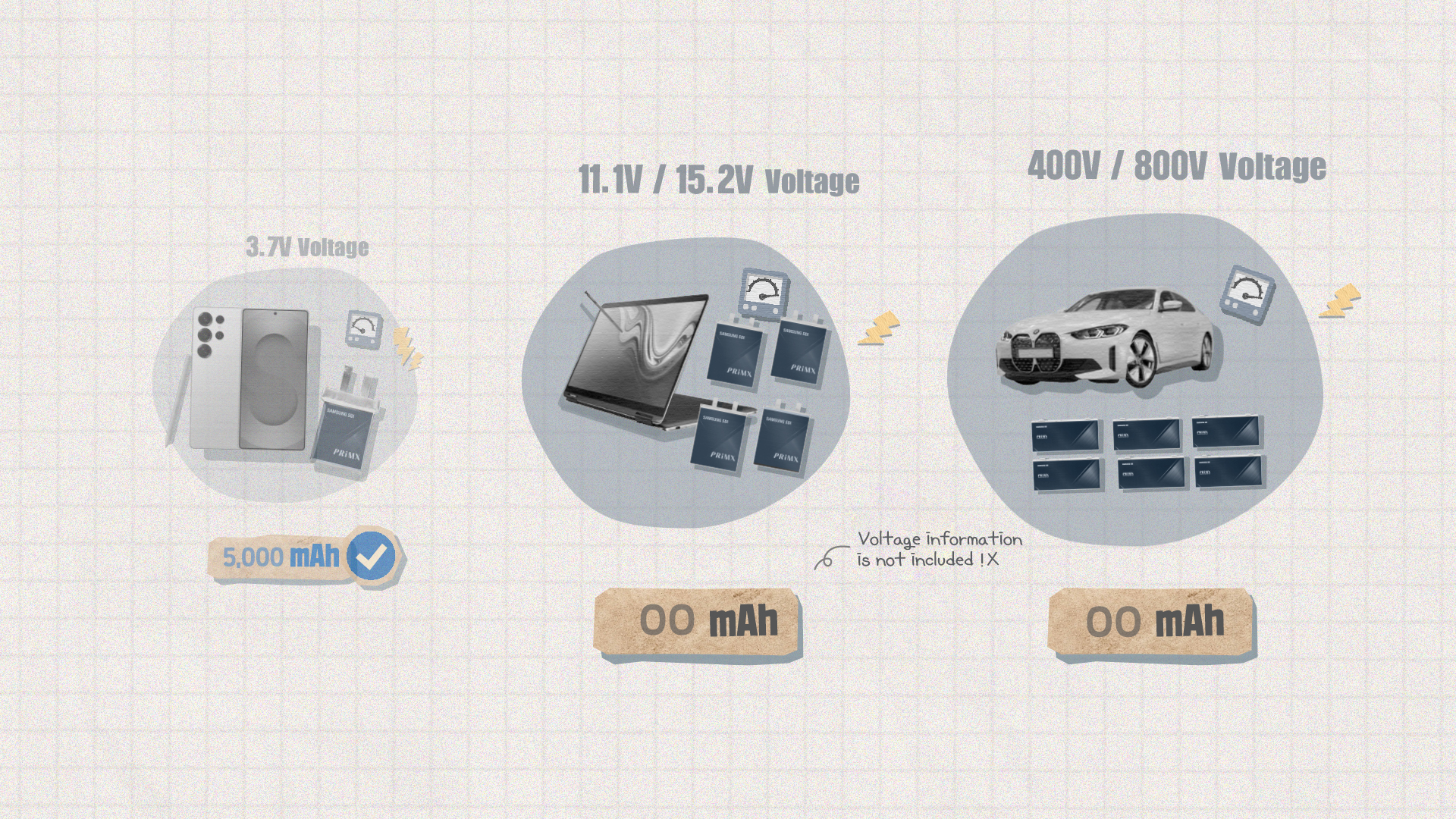Technology & Products
[1-Minute Battery] Smartphones Use ‘mAh’, EVs Use ‘kWh’ – Why the Difference?
2025.06.05
|
[1-Minute Battery] provides easy and quick explanations from simple curiosities about batteries to insightful questions! |
When buying a smartphone, laptop, or electric vehicle, there’s one thing that we all check—battery capacity. But here’s a question: why do smartphones use mAh as a capacity unit, while laptops and EVs use Wh or kWh? They all use lithium-ion batteries, so why the confusing difference in units? Today, let’s dive into the surprisingly thoughtful logic behind battery capacity labeling, designed with the user in mind.

[Why different devices use different units for capacity?]
mAh vs Wh – What's the difference?
Both mAh and Wh are units used to indicate battery capacity. The key difference between the two lies in ‘whether voltage information is included’. ‘mAh’ shows ‘how long a battery can supply current’ without taking voltage into account—it's a current-focused unit. In contrast, ‘Wh’ includes voltage information and indicates not only ‘how long the battery can last, but also how much power (instant power output) it can deliver’. In other words, it represents the total amount of energy the battery holds. Therefore, Wh is considered a more accurate unit for indicating battery capacity than mAh.
* mAh x V ÷ 1000 = Wh

[mAh x Voltage (V) ÷ 1000 = Wh]
Then shouldn’t we just use Wh?
Lithium-ion batteries operate within a voltage range of 3.0 to 4.2V as they go through repeated charge and discharge cycles. However, to balance factors such as energy density, lifespan, and safety, an average voltage of 3.7V is used as the standard (nominal) voltage. According to this standard, each battery cell is labeled as a “3.7V cell,” and this nominal voltage is used as the basis for capacity calculations.
Most smartphones are equipped with a single 3.7V cell, which is why battery capacity can be compared using just mAh. That's because the voltage is fixed at 3.7V. In contrast, laptops and EVs require much more energy than smartphones to operate. Therefore, multiple cells are connected in series or parallel, resulting in a wide range of voltages such as 11.1V, 15.2V, 400V, or even 800V. This means that even if two batteries have the same mAh, their actual energy (Wh) can be completely different. That’s why devices like these must use Wh, which includes voltage information, to allow for accurate capacity comparisons.

[While smartphones use a fixed voltage, devices like laptops and electric vehicles operate at various voltage levels.]
It’s not to confuse you—it’s actually for your convenience!
Smartphone batteries use mAh for simplicity and clarity. Wh takes voltage into account for greater accuracy. And for large-capacity batteries like those in EVs and ESS, units like kWh or MWh are used for clarity and scale. It was actually for your convenience after all!
